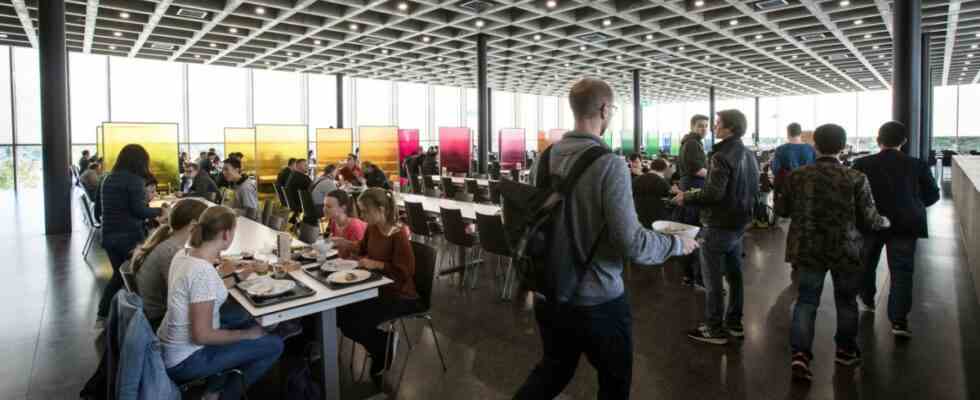Munich has many students who want to be fed. With around 17 locations, this is trying Munich Student Unionto satisfy hunger. The focus is on environmentally friendly food production. The canteen operators are now going one step further and want to better inform guests about their choice of food in the future. In concrete terms: you want to show how environmentally harmful or compatible the dishes on offer are.
So when you stand at the food counter in the future, you will soon be able to read not only the names of the dishes and allergy information, but also how large the CO₂ footprint of the food is. Next to a portion of Penne Quattro Formaggi, the statement “411 grams of CO₂” could appear in red, while a plate of falafel could have a soft green indicating “143 grams of CO₂” per 100 gram portion.
This could reduce greenhouse gas emissions from food production by around ten percent. At least that’s what came out of an experiment at the Mensa Leopoldstrasse.
Carbon dioxide emissions were reported there for around ten days. As a result, guests chose more environmentally friendly meals without knowing that they were part of an experiment. A total of around 8,000 students and guests took part – without knowing it – and ate 20,000 meals.
Stop before you eat in the canteen: a small steamed dumpling with vanilla sauce is said to have 130 grams of CO₂ emissions.
(Photo: TRR 266)
An international research team headed by Thorsten Sellhorn, a professor at Ludwigs-Maximilians-Universität, carried out the experiment last November. The result: specifying the environmental costs with traffic light colors and in euros is the most effective. Color coding for food, for example, already exists at Nutri Score, which indicates the nutritional value of food. According to Sellhorn, this has not yet been the case for CO₂ data. The advantage here is that you can compare a uniform size and not compare “apples with pears” as with the Nutri-Score.
The environmental costs are based on the decisions of the Paris climate agreement. The remaining worldwide CO₂ budget was calculated for the individual guests and the daily share for food was compared with the balance of the court. The emissions of the individual dishes were determined using the initiative climate plate calculated, which is funded by the Federal Ministry for the Environment, among others. Above all, however, the canteen management and the employees had to play their part. In order to guarantee a full selection of dishes at all times, the canteen had to prepare more food than usual.
The Munich student union would like to introduce permanent CO₂ labeling in its canteens by the end of the year, but by early 2024 at the latest. The accompanying project is scheduled to start in the coming summer semester. The feedback from other areas is also positive, reports Professor Sellhorn. In the future, companies could gain a competitive advantage over their competitors by better labeling their CO₂ balance sheet on their products; the areas of application are therefore very large.
Sellhorn emphasizes that the study would definitely have been published, no matter what the results would have been: “Of course we’re pleased that we have positive results,” says Sellhorn.

